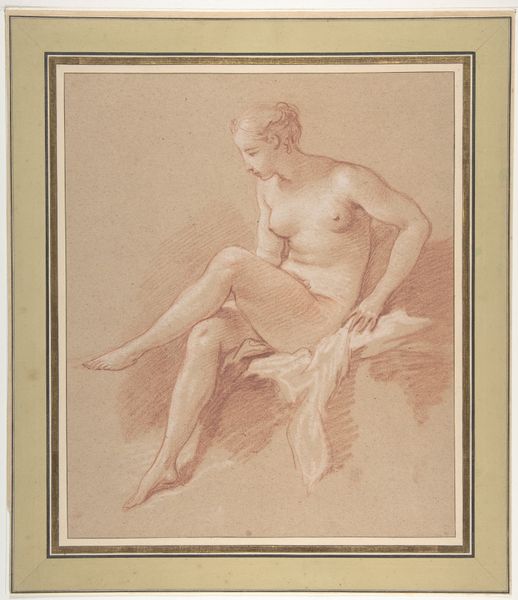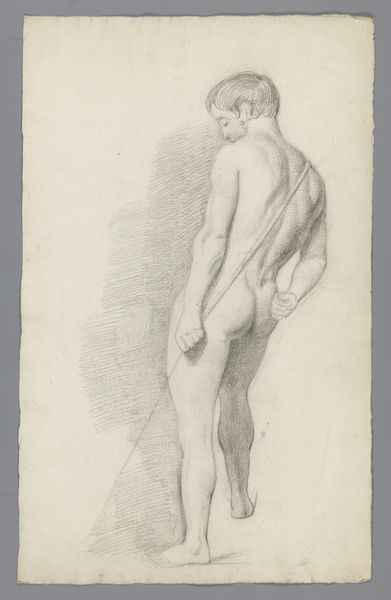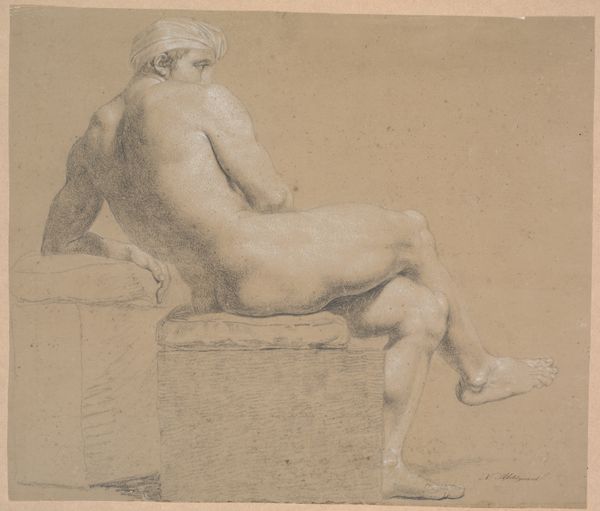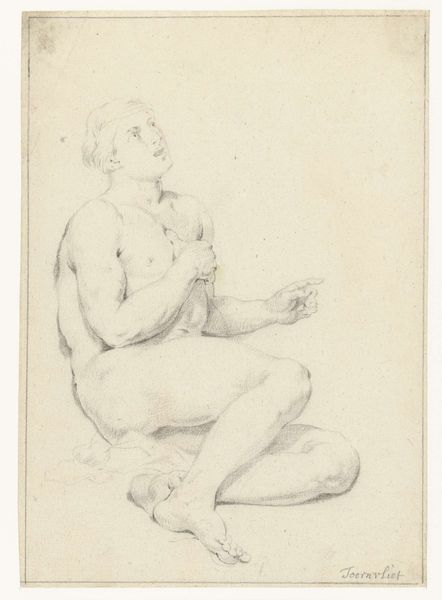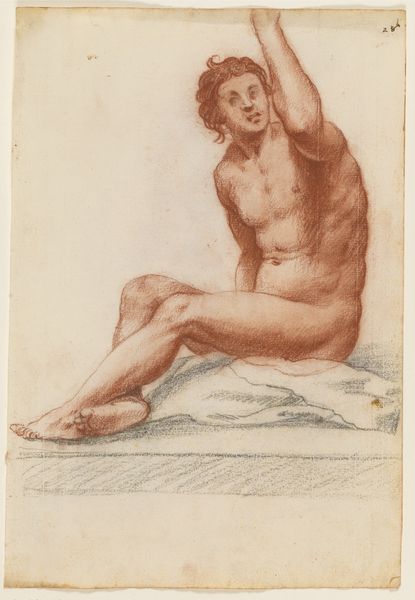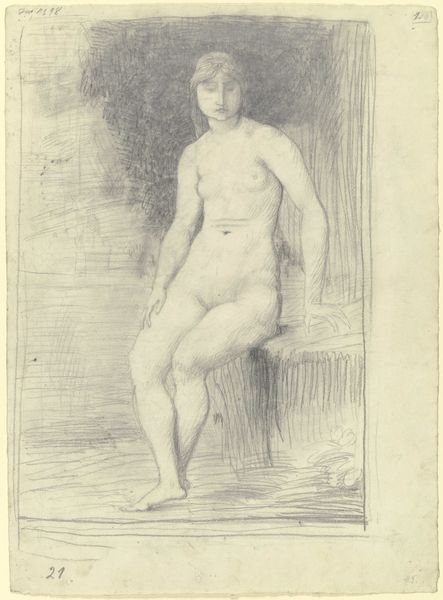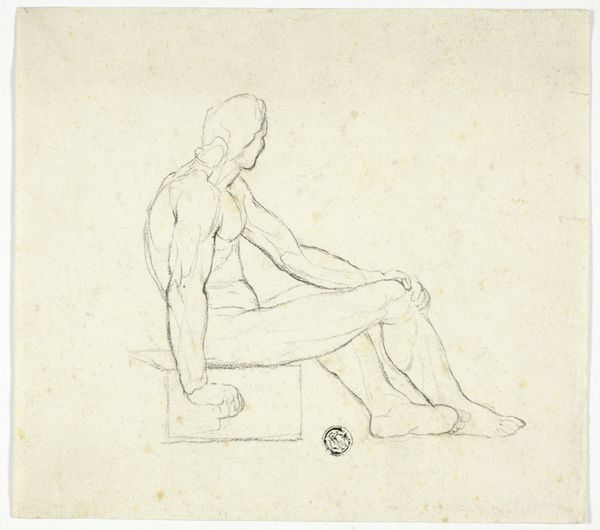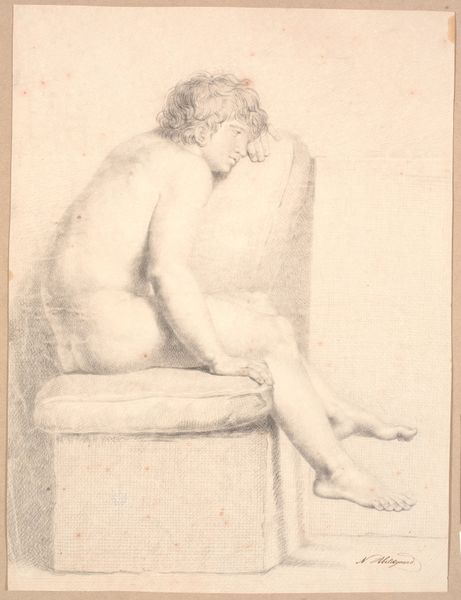
drawing, paper, dry-media, pencil
#
portrait
#
drawing
#
16_19th-century
#
paper
#
dry-media
#
pencil drawing
#
pencil
#
nude
#
realism
Copyright: Public Domain
Editor: Here we have Otto Scholderer's "Sitzender männlicher Rückenakt," a pencil drawing on paper from 1855. I find the figure's relaxed pose quite striking, yet there's a certain melancholy to the subject's averted gaze. How do you interpret this work? Curator: This drawing provides a compelling entry point to discuss the conventions and power dynamics inherent in the artistic representation of the male nude, especially within the 19th century context. We might consider, for instance, how academic traditions often served to idealize the male form, frequently overlooking the diverse realities of male bodies. The choice to present the back view may also be interpreted, signaling an intent to invite the viewer to gaze upon an anonymous, depersonalized body. It leads me to consider the purpose and effect of that choice: what does the artist aim to achieve by focusing on the subject’s back? Editor: That’s a very interesting way to think about it. I initially saw it simply as an exercise in form, a study of anatomy. But I hadn’t considered the power dynamics involved in depicting the nude. Curator: Exactly. How does Scholderer's work either conform to or challenge normative ways of portraying male nudes and what conversations does this incite about gender, observation, and power within the art historical canon? Consider how art production reproduces or destabilizes broader socio-political conventions? Editor: That gives me a lot to consider in future works I analyze, too. I had never explored the artist’s intent on gender or class issues. It seems clear how such interpretations could influence its place in art history. Curator: Indeed, this one pencil sketch opens pathways to discuss broader social questions in the study and creation of art. It highlights how paying attention to the past and the present are interwoven and affect our gaze.
Comments
No comments
Be the first to comment and join the conversation on the ultimate creative platform.

